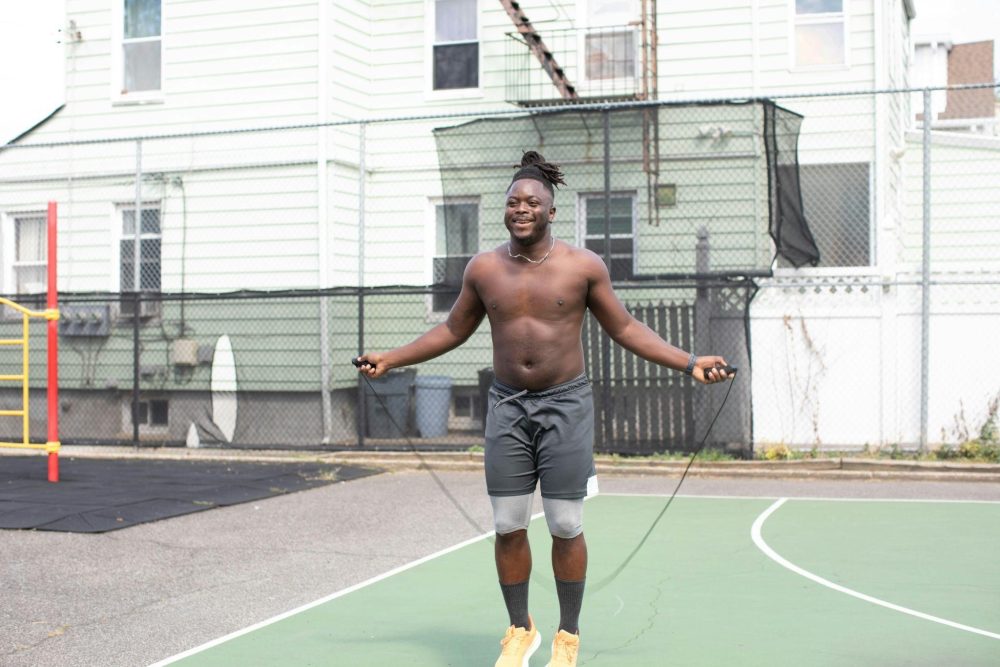Jump rope workouts are a versatile and highly effective way to improve cardiovascular health, enhance coordination, and burn calories. This simple yet powerful exercise has long been a staple in fitness routines due to its ability to provide a full-body workout in a short amount of time. Whether you are looking to lose weight, increase endurance, or simply add variety to your fitness regimen, jumping rope can help you achieve your goals. However, to maximise the benefits and prevent injury, it is essential to tailor your jump rope routine to your current fitness level. This guide will help you do just that by providing detailed routines for beginners, intermediates, and advanced jumpers, as well as tips on customising your workouts to meet specific fitness goals.
Beginner Routines
Basic Jump Rope Technique
Before diving into jump rope workouts, it is crucial to master the basic technique. Start by selecting a rope that is appropriate for your height—when you stand in the centre of the rope, the handles should reach your armpits. Hold the handles lightly and keep your elbows close to your sides. The movement should come from your wrists, not your arms, ensuring smooth and controlled rotations. Your jumps should be small and quick, just enough to clear the rope. Focus on landing softly on the balls of your feet to reduce impact.
Common Mistakes to Avoid:
- Jumping too high can cause unnecessary strain on your joints.
- Using your arms instead of your wrists leads to fatigue and inefficient movement.
- Over-gripping the handles can cause tension in your shoulders and upper body.
Simple Routines to Get Started
Routine 1: 5-Minute Warm-Up
Start with a basic 5-minute routine to warm up your muscles and get comfortable with the rhythm of jumping. Begin with 30 seconds of basic jumps, followed by 30 seconds of rest. Repeat this pattern for 5 minutes, gradually increasing the speed of your jumps as you become more comfortable.
Routine 2: 10-Minute Cardio Boost
Once you have mastered the basic jump, try a 10-minute cardio routine. Start with 1 minute of basic jumps, followed by 30 seconds of high knees (jumping with your knees lifted towards your chest). Rest for 30 seconds and repeat this cycle until you reach 10 minutes. This routine will help increase your heart rate and improve your cardiovascular endurance.
Tips for Building Endurance:
As a beginner, it is important to gradually build up your endurance. Start with short sessions and slowly increase the duration and intensity of your workouts. Aim to add an extra minute to your routine each week, or increase the speed of your jumps as you become more confident.
Intermediate Routines
Enhancing Skill and Stamina
Once you have mastered the basics, it is time to introduce more complex techniques into your routine. Intermediate jumpers can start incorporating single-leg jumps, where you alternate legs with each jump, and alternating feet, where you mimic a running motion while jumping rope. These variations help improve balance, coordination, and overall stamina.
Structured Workouts
Routine 1: 20-Minute Interval Training
This routine combines high-intensity intervals with rest periods to maximise calorie burn and improve endurance. Start with 2 minutes of basic jumps, followed by 30 seconds of single-leg jumps on each leg. Rest for 1 minute, then repeat the cycle for 20 minutes. This workout challenges your stamina and introduces variability to keep the routine engaging.
Routine 2: 15-Minute Full-Body Workout
Incorporate bodyweight exercises into your skipping rope routine for a full-body workout. Start with 2 minutes of basic jumps, followed by 10 squats. Continue with 1 minute of alternating feet jumps, followed by 10 lunges on each leg. Rest for 1 minute and repeat the cycle until you reach 15 minutes. This routine combines cardio with strength training to enhance overall fitness.
Progression Strategies:
To avoid hitting a plateau, gradually increase the intensity of your workouts by reducing rest periods or incorporating more complex jump rope techniques. Challenge yourself with longer sessions or faster-paced intervals to continue making progress.
Advanced Routines
Advanced Techniques and Skills
For experienced jumpers, advanced techniques such as double-unders (where the rope passes under your feet twice with each jump) and criss-crosses (crossing your arms in front of your body as you jump) can add a new level of difficulty to your routine. These skills require precise timing, quick reflexes, and a high level of coordination.
High-Intensity Workouts
Routine 1: 30-Minute HIIT Session
High-Intensity Interval Training (HIIT) is an excellent way to combine strength and cardio in a single session. Start with 3 minutes of basic jumps to warm up, followed by 1 minute of double-unders. Rest for 30 seconds, then perform 1 minute of criss-crosses. Repeat the cycle for 30 minutes, incorporating other advanced techniques as you see fit. This routine is designed to push your limits and maximise calorie burn.
Routine 2: 25-Minute Strength and Conditioning
Integrate strength exercises into your jump rope routine for a comprehensive workout. Start with 3 minutes of basic jumps, followed by 10 push-ups. Continue with 2 minutes of single-leg jumps, followed by 10 burpees. Rest for 1 minute, then repeat the cycle until you reach 25 minutes. This routine builds strength, endurance, and agility, making it ideal for advanced athletes.
Performance and Competition Preparation:
If you are preparing for a competition or aiming to master complex routines, focus on consistency and technique. Practise advanced skills regularly and incorporate them into your daily workouts. Consider filming your sessions to analyse your form and identify areas for improvement.
Customising Routines for Specific Goals
Weight Loss
For those focused on weight loss, routines that emphasise high-calorie burn and sustained activity are ideal. Incorporate long-duration sessions with minimal rest periods, focusing on continuous movement and high-intensity intervals.
Endurance Building
If endurance is your goal, opt for long-duration, consistent workouts that challenge your stamina. Aim for routines that last 20 minutes or more, gradually increasing the length of each session as your endurance improves.
Coordination and Agility
To enhance coordination and agility, include techniques and drills that require precise timing and quick reflexes. Practice footwork drills, alternating feet jumps, and criss-crosses to improve your coordination and agility over time.
Safety and Injury Prevention
Proper Equipment
Choosing the right jump rope is essential for a safe and effective workout. Consider the material, weight, and length of the rope based on your fitness level and goals. Beginners may benefit from a slightly heavier rope to help maintain control, while advanced jumpers might prefer a lighter, faster rope for complex techniques.
Warm-Up and Cool-Down
Always start your jump rope session with a proper warm-up to prepare your muscles and joints for the workout ahead. Include dynamic stretches, such as leg swings and arm circles, to increase blood flow and reduce the risk of injury. After your workout, take time to cool down with static stretches to help your muscles recover and maintain flexibility.
Common Injuries and Prevention
Jump rope injuries, such as shin splints, ankle sprains, and knee pain, are often caused by improper technique or overtraining. To prevent these injuries, focus on maintaining proper form, landing softly, and gradually increasing the intensity of your workouts. Listen to your body and allow adequate rest between sessions to avoid overuse injuries.
Conclusion
Jump rope routines offer an efficient and versatile way to achieve your fitness goals, whether you are a beginner, intermediate, or advanced jumper. By tailoring your routine to your current fitness level, you can maximise the benefits of your workouts while minimising the risk of injury. Start with appropriate routines and progress gradually, exploring various techniques and challenges as you improve. With consistency and dedication, jumping rope can become a powerful tool in your fitness journey, helping you achieve a healthier, stronger, and more agile body.





